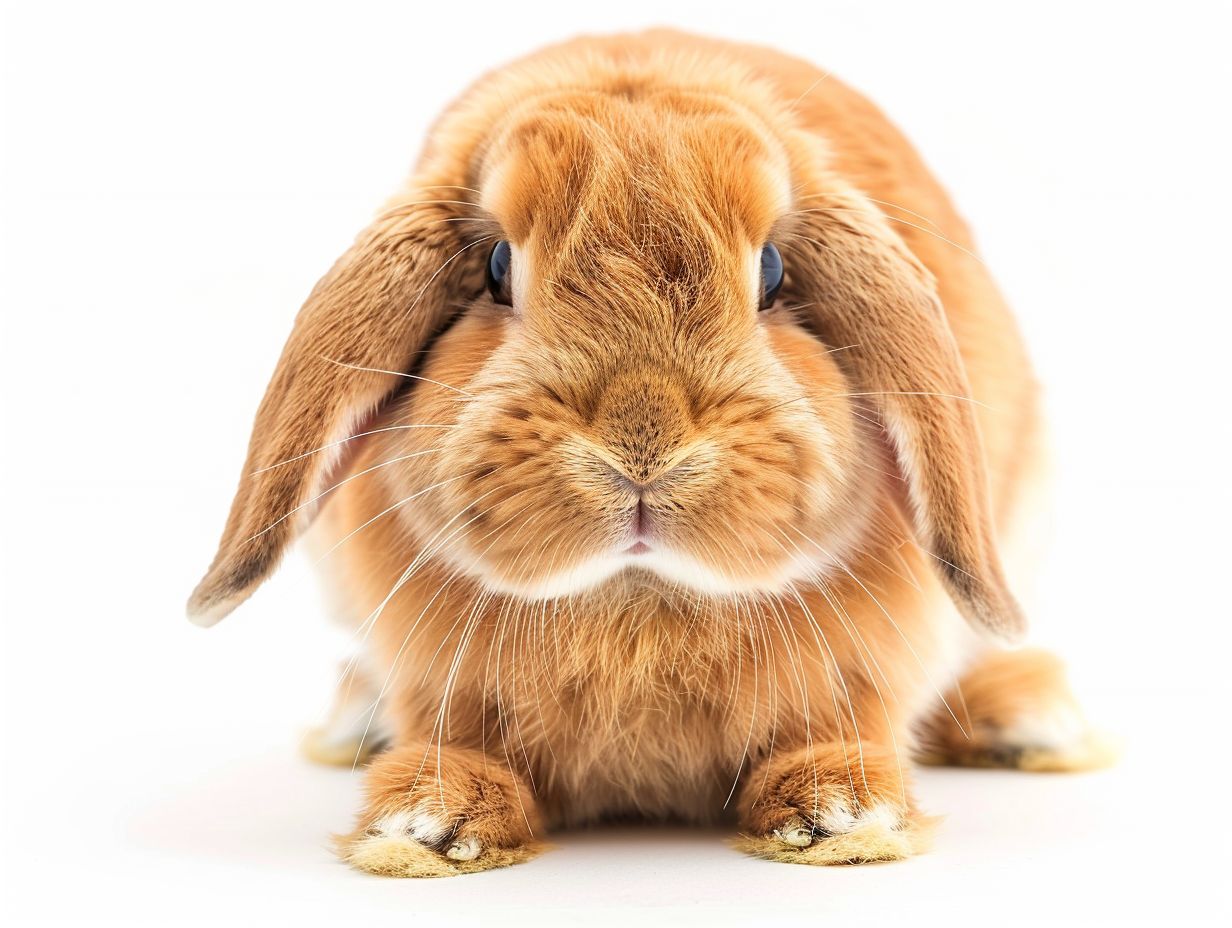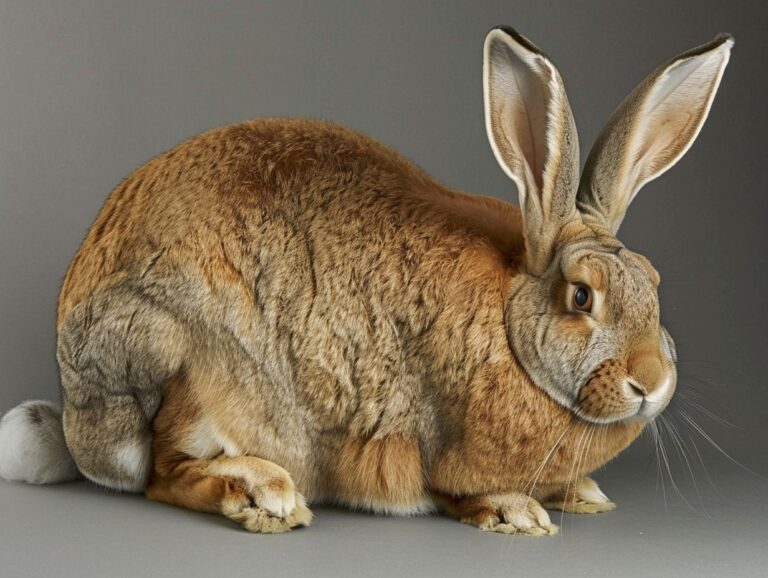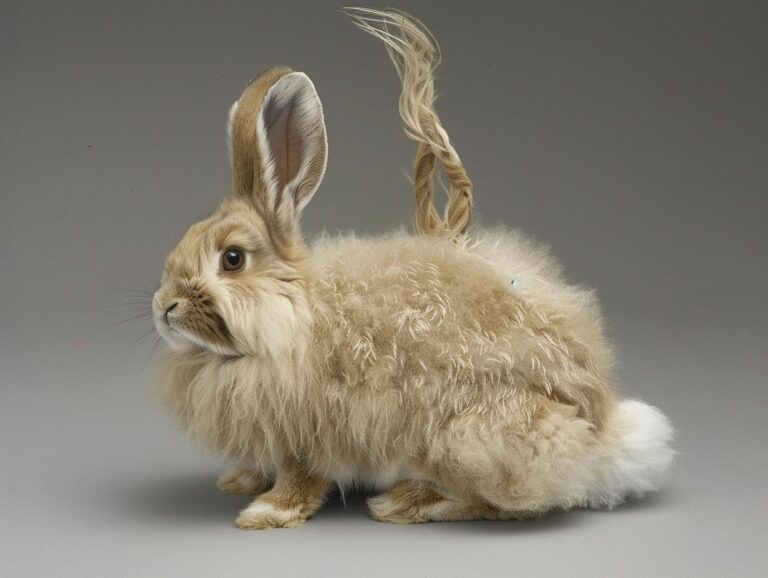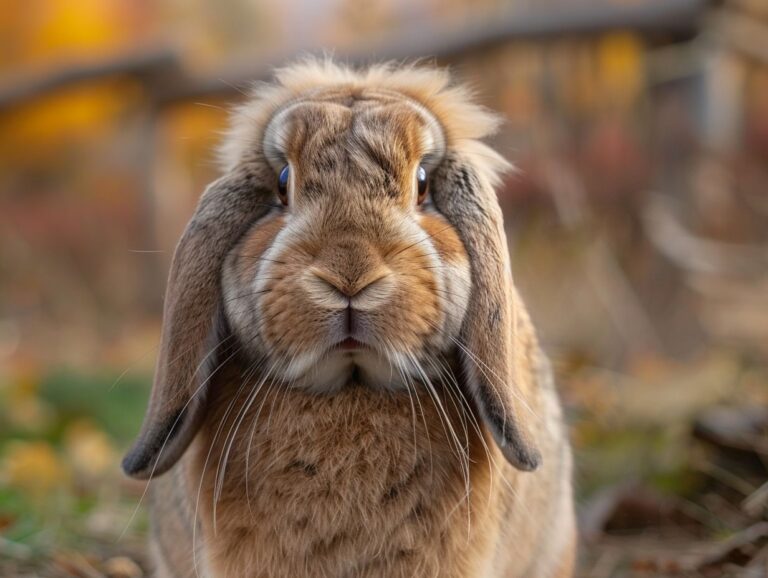English Lop Rabbit Breed: Characteristics, Care, History, and Breeding Practices
Interested in learning more about the English Lop Rabbit breed?
From their physical characteristics to care requirements and common health issues, this article covers everything you need to know about these lovable creatures.
Discover the history of the English Lop Rabbit breed, the best breeding practices, and how to properly care for pregnant rabbits.
Whether you’re a seasoned rabbit owner or considering adding an English Lop to your family, this article has all the information you need.
Key Takeaways:
What Is the English Lop Rabbit Breed?
The English Lop Rabbit is a distinctive breed known for its long ears and unique appearance. It falls under the lop breed category, characterized by its signature drooping ears.
This breed originated in England in the 19th century, where it was selectively bred for its lop features, resulting in the elongated ears that set it apart from other rabbit breeds. English Lop Rabbits are medium to large-sized, with a rounded body and a coat that comes in various colors and patterns, adding to their aesthetic appeal.
One of the most intriguing aspects of their genetics is the presence of the lop gene, which dictates the development of their distinctive ears. This gene mutation is what gives English Lop Rabbits their charming floppy ears that can grow up to an impressive length, often longer than the rabbit’s actual body.
What Are the Physical Characteristics of the English Lop Rabbit?
The physical characteristics of the English Lop Rabbit are defined by its oversized ears that can grow up to 20 inches in length, making them the focal point of its appearance. These long ears are a key feature that distinguishes the English Lop from other rabbit breeds.
Plus their distinctive ears, English Lop Rabbits also have compact, muscular bodies that are medium to large in size. Their bodies are well-rounded with a broad head that complements their majestic ears.
One unique special characteristic of the English Lop is its docile and friendly nature, making them popular as companion pets. This breed is known for its calm demeanor, which adds to its appeal as a family pet. Due to their extreme ear size, English Lops are prone to certain health problems such as ear infections or injuries. These issues are a result of the selective genetic breeding that has shaped the breed s appearance over time.
The breeding practices focused on enhancing the length of their ears have inadvertently led to challenges related to ear hygiene and maintenance. Despite these health concerns, the English Lop Rabbit remains a beloved breed cherished for its distinctive appearance and gentle personality.
What Is the History of the English Lop Rabbit Breed?
The history of the English Lop Rabbit breed traces back to the Victorian era when breeders in England aimed to develop a unique and elegant rabbit with distinctive features. This breed gained recognition in the rabbit world due to its graceful movements and charming appearance.
During the 19th century, breeders selectively bred these rabbits to achieve the iconic droopy ears that set the English Lop apart from other rabbit breeds. The creation of this breed was a meticulous process that involved crossing various rabbit breeds to attain the desired characteristics.
The English Lop Rabbit was later introduced to show competitions where its unique appearance captivated audiences and judges alike. Its popularity soared as more people started keeping them as pets due to their friendly and sociable nature.
What Are the Care Requirements for English Lop Rabbits?
Proper care for English Lop Rabbits includes providing a suitable environment, balanced diet, regular grooming, and attentive care from pet owners. These rabbits thrive in a clean and spacious environment that meets their specific needs.
When creating a suitable living space for an English Lop Rabbit, ensure they have enough room to hop around and stretch their long ears. A spacious enclosure with hiding spots and toys for mental stimulation is ideal. Regarding their diet,
a balanced diet
rich in hay, fresh vegetables, and a limited amount of pellets is crucial for their health. Regular grooming sessions, including brushing their long fur and checking their nails, are necessary to prevent matting and overgrowth. Responsible pet owners must also provide regular veterinary check-ups and monitor their rabbit’s well-being closely.
What Type of Environment Do English Lop Rabbits Need?

Bedding materials play a crucial role in maintaining a healthy living environment for English Lop Rabbits. Opt for materials like paper-based bedding, hay, or straw to provide comfort and absorb moisture effectively. Regularly clean and replace the bedding to prevent the buildup of odor-causing bacteria. Ensure that the cage setup includes a constant supply of fresh hay and clean water to support the rabbits’ digestive health and hydration needs. Adhering to proper husbandry practices, such as maintaining cleanliness and providing a balanced diet, is essential for the overall well-being of these charming creatures.
What Do English Lop Rabbits Eat?
The diet of English Lop Rabbits should consist of high-quality hay, fresh vegetables, and a limited amount of pellets to meet their nutritional needs. It is essential to provide a balanced diet to prevent common health issues such as infections and digestive problems.
English Lop Rabbits are herbivores and require a diet rich in fiber to maintain their digestive health. Hay, such as timothy hay or grass hay, should make up the majority of their diet, aiding in digestion and wearing down their continuously growing teeth.
Supplementing their diet with fresh vegetables like leafy greens and herbs provides essential vitamins and minerals. Caution should be exercised to prevent overfeeding, as excess vegetables can lead to digestive disturbances.
Plus hay and vegetables, pellets formulated specifically for rabbits can be offered in limited quantities to ensure they receive essential nutrients. Monitoring portion sizes is crucial to prevent obesity.
How Often Should English Lop Rabbits Be Groomed?
English Lop Rabbits should be groomed regularly to prevent matting and maintain healthy fur. This grooming routine includes brushing their coat, trimming nails, and inspecting for any signs of discomfort or genetic welfare problems.
Grooming sessions for English Lop Rabbits should ideally be scheduled at least once a week to ensure their coat remains in top condition. Brushing their long, flowing fur not only removes loose hair and prevents mats but also promotes healthy circulation and stimulates their skin’s natural oils.
In terms of nail trimming, it is recommended to use specialized small animal nail clippers, taking care to avoid cutting the quick to prevent bleeding and discomfort.
Regular grooming not only enhances your rabbit’s appearance but also plays a vital role in their overall well-being. By closely monitoring their grooming routine, you can detect early signs of mental distress or genetic welfare problems. This proactive approach can prevent any potential pain or discomfort, ensuring your beloved pet remains happy and healthy.
What Are the Common Health Issues for English Lop Rabbits?
English Lop Rabbits are susceptible to various health problems, including ear infections, obesity, and genetic disorders. It is important for pet owners to be vigilant in monitoring their rabbits for any signs of illness or discomfort.
Ear infections are a common issue in English Lop Rabbits, often caused by the breed’s distinctive lop ears which can trap moisture and debris. Symptoms may include head tilting, scratching at the ears, or discharge.
Obesity is another concern that can affect Lilac rabbit breeds due to their docile nature and love for food. Pet owners should closely monitor their rabbit’s diet and provide ample exercise to prevent weight gain.
Genetic disorders such as dental issues or musculoskeletal problems are also prevalent in this breed, necessitating regular veterinary check-ups for early detection and management.
What Are the Signs of Illness in English Lop Rabbits?
Recognizing the signs of illness in English Lop Rabbits is crucial for timely diagnosis and treatment. Symptoms such as changes in behavior, reduced appetite, or abnormal discharges should prompt immediate care and veterinary attention.
Watch out for physical symptoms like weight loss, lethargy, or breathing difficulties, as these could also indicate underlying health issues.
- Environmental factors, such as poor cage hygiene, improper diet, or extreme temperatures, can contribute to their susceptibility to diseases.
- Obesity is a common concern, which can lead to various health complications in English Lop Rabbits if not managed through proper nutrition and exercise.
Regular monitoring of their environment and early intervention play a significant role in maintaining their well-being.
How Can Illnesses and Injuries Be Prevented in English Lop Rabbits?

Regular veterinary check-ups play a crucial role in identifying any potential health concerns early on, allowing for prompt intervention. Preventive healthcare is key in ensuring the overall well-being of your furry companion.
Creating a safe and hygienic living space for your rabbit is essential to prevent infections and injuries. Providing a balanced diet rich in fiber and essential nutrients is vital for their digestive health and immune system. Engaging in regular exercise and mental stimulation can also contribute to their overall health and happiness.
What Are the Best Breeding Practices for English Lop Rabbits?
In terms of breeding English Lop Rabbits, a thorough understanding of genetics, carrier traits, and breeding standards is essential. Breeders should aim to produce healthy offspring that meet competition and show criteria while maintaining genetic diversity.
Breeding English Lop Rabbits involves selecting breeding pairs with complementing traits to enhance desirable features in each generation. Genetics play a crucial role in determining the characteristics of the rabbits, whether it’s the length of their ears, body shape, or coat color. By understanding the complex interactions of genetic factors, breeders can predict the outcomes of mating pairs and selectively breed for specific traits.
When Is the Best Time to Breed English Lop Rabbits?
Choosing the right time to breed English Lop Rabbits involves considering factors such as the rabbits’ age, health, and readiness for mating. Breeders should plan breeding activities carefully to ensure the well-being of the rabbits and the offspring.
In terms of the age factor, female English Lop Rabbits are typically ready for breeding between 6 to 12 months old, while males can start at around 5 to 8 months.
Health plays a crucial role; rabbits should be in prime condition physically and mentally before breeding, undergo regular vet check-ups, and have a balanced diet.
Ensuring the readiness for mating involves observing behavioral cues like increased territoriality and receptiveness, which indicate that the rabbits are prepared for breeding.
Breeding can have various implications for pet rabbits, such as potential health risks and the responsibility of caring for litters.
How Can You Tell If a Female English Lop Rabbit Is Pregnant?
Determining if a female English Lop Rabbit is pregnant requires observation of physical changes, nesting behavior, and changes in appetite. Proper care and husbandry practices are crucial during this period to ensure the health and well-being of both the pregnant doe and her offspring.
Symptoms of pregnancy in English Lop Rabbits can include increased abdominal size, a dewlap, or a flap of skin under the chin, becoming more prominent, and changes in behavior such as increased grooming and digging. A pregnant doe may start building a nest using straw or other materials, showing signs of nesting behavior.
It is essential to provide a quiet and stress-free environment for the pregnant rabbit to minimize any disturbances. Adhering to a proper diet rich in hay, fresh vegetables, and water is crucial for her health and the development of the litter. Regular veterinary check-ups during pregnancy can help monitor the doe’s progress and address any potential issues early on.
What Are the Care Requirements for Pregnant English Lop Rabbits?
Pregnant English Lop Rabbits require specialized care to support their health and the development of their offspring. Proper nutrition, grooming, and monitoring for diseases are essential aspects of ensuring a successful pregnancy and the well-being of the rabbits.
One critical aspect of caring for pregnant American rabbit breeds is their dietary requirements. These delicate rabbits need a well-balanced diet rich in fiber, vitamins, and minerals to ensure proper growth and development of the unborn bunnies.
Grooming plays a vital role in maintaining their hygiene and preventing any skin issues or matting of their luxurious fur.
Regular veterinary check-ups are crucial for detecting any potential health problems early on and ensuring a healthy pregnancy. Monitoring for diseases like pasteurellosis is particularly important, as it can have serious consequences for both the mother and the litter.
Frequently Asked Questions
1. What are the characteristics of the English Lop Rabbit Breed?
The English Lop Rabbit Breed is known for its long, droopy ears and its large, stocky body. They come in a variety of colors including white, black, and shades of brown. They are also known for their gentle and friendly nature.
2. How should I care for an English Lop Rabbit?
English Lop Rabbits require regular grooming to prevent matting of their long fur. They also need a spacious living area with plenty of room to exercise and play. It is important to provide them with a well-balanced diet consisting of hay, fresh vegetables, and a small amount of pellets.
3. What is the history of the English Lop Rabbit Breed?
The English Lop Rabbit Breed was first developed in England in the 19th century by crossing French and English rabbits. They were originally bred for their meat and fur, but eventually became popular as pets due to their unique appearance and friendly demeanor.
4. Are there any health concerns specific to English Lop Rabbits?
English Lop Rabbits are prone to ear infections due to the length of their ears. It is important to regularly check their ears for any signs of infection and to keep them clean. They are also at risk for obesity, so it is important to monitor their diet and exercise.
5. What are some important breeding practices for English Lop Rabbits?
When breeding English Lop Rabbits, it is important to select healthy and well-tempered rabbits. Breeding pairs should be introduced gradually and monitored closely for any signs of aggression. It is also important to provide a warm and comfortable nesting area for the pregnant doe.
6. Can English Lop Rabbits be kept as indoor pets?
Yes, English Lop Rabbits can make great indoor pets as long as they have enough space to exercise and explore. They should never be kept in a cage all day and should be allowed time outside of their living area to hop and play.








